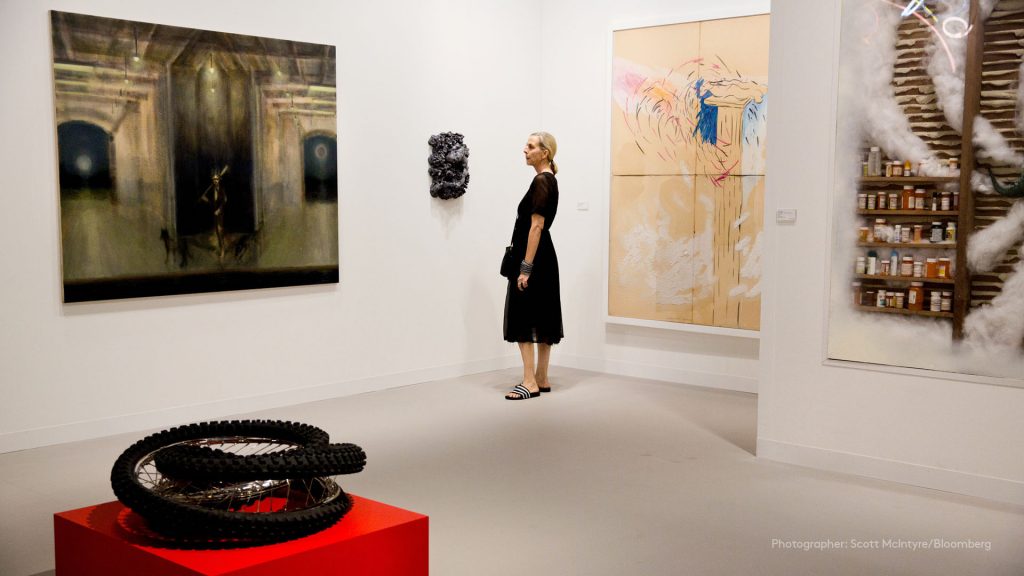Key Takeaway
Arthena, a New York-based data startup, is guiding investment decisions in the fine art market by leveraging insights from external data. By analysing thousands of data points relevant to the artist and artworks, the tool generates personalized recommendations for investment in the company’s art funds.
Just as frontrunners in the in the financial industry have found ways of leveraging predictive algorithms fed by external data to inform major investment decisions, New York based startup Arthena has adopted a similar investment principle for the art market. Arthena guides interested investors using the same data-driven approach adopted by today’s top fund managers. In doing so, Arthena is committed to bringing transparency to art investing, enabling investors to view and learn about acquired assets and artists.
The data driving investment decisions
Arthena uses more than 18 million data points – similar to those used to inform algorithmic stock trading formulas – in order to recommend smart investments in art. Recommendations are generated based on information about particular works of art, including the artist, their career trajectories, their aesthetic style, the medium they work with, the size of the art work, auction records, presence in esteemed private or public collections, and social media coverage, amongst several other factors.
These factors are aggregated across thousands of pieces of art, and coupled with a touch of human insight, allowing Arthena to predict which artworks are most likely to generate favorable returns for their investors. Based on this analysis, those investors can allocate resources into various Arthena funds depending on their market risk.
Several funds are managed,ranging from low risk investments in modern and post-war works, to high risk funds that invest in emerging contemporary art. For instance, a fund working with pieces by pioneers of modernism such as Pablo Picasso, Henri Matisse, Piet Mondrian, Georges Braque would be considered a portfolio of low risk investment, as opposed to lesser known modern artists who are still gaining initial traction.

Using analytics to control risk and return on investment
Arthena has pioneered a quantitative strategy by using data science to inform art asset acquisitions and favorable investment opportunities. By combining the quantitative model with human intelligence to analyse market trends, Arthena identifies artworks with strong investment potential and a low rate of volatility, which are likely to result in strong returns.
Their pricing model allows the implementation of targeted investment decisions in sectors with a strong historical return rate and high liquidity. With that in mind, Arthena builds a number of funds that look to achieve portfolio optimisation, with a targeted rate of return comparable to any other product an investor has or would consider investing in.
Given the volatility of the art market is volatile, certain modern and contemporary artists often directly correlate with the S&P 500. Arthena’s methodology treats art assets like a financial market: it informs traditional investment decisions but can also identify where there may not be a correlation and which pieces are set to outperform the benchmark of the overall market.
The funds focus on different categories, including emerging art, post war to contemporary art and modern art, which comprises almost 70% of the US art market. Investments are looked at from a liquidity point of view, and all the artists considered have a strong auction and historical track record.
Intrinsic or investment value?
Investing in the art market is appealing as it often offers impressive returns, somewhat independent of the ups and downs of the stock market. In an interview with TechCrunch, Co-founder and Executive Officer of Arthena, Madelaine d’Angelo,said, “Arthena can double the art market’s standard annual return of 10 percent. And there definitely seems to be interest on the investor side — since the company switched to its current approach a few months ago, it’s received $20 million in commitments.”
Alternatively, putting a value to art is more often than not considered subjective, and hence purchasing artwork for investment sake can also be received poorly by industry experts.

However, d’Angelo, speaking to Bloomberg, says, “AI could shed light on a market where deals are often done privately, lower the barriers to entry and help democratise art investing. The company also has a human touch before any decisions are finalised. The goal remains not to make works more affordable to collectors but merely to add volume to the market.”
d’Angelo makes it clear that her role is not to de-value art collecting, but to be able to make more art available as an asset class and an investment opportunity. Sheadds, “Collecting and investing are two completely separate activities.” “It’s very hard to separate that emotional aspect. When you’re looking at it from a non-mathematically-driven point of view, you can miss really great opportunities in market. Or you might overpay for something that you’re attached to.”
Just as blue chip organisations leverage predictive analytics using machine learning in order to truly understand the growth potential of a business, Arthena uses Outside Insight via external market data around artists and art works in order to decide the growth potential and rate of return on their investment funds – a concept that can be applied to strategic investment decisions across nearly every sector.

